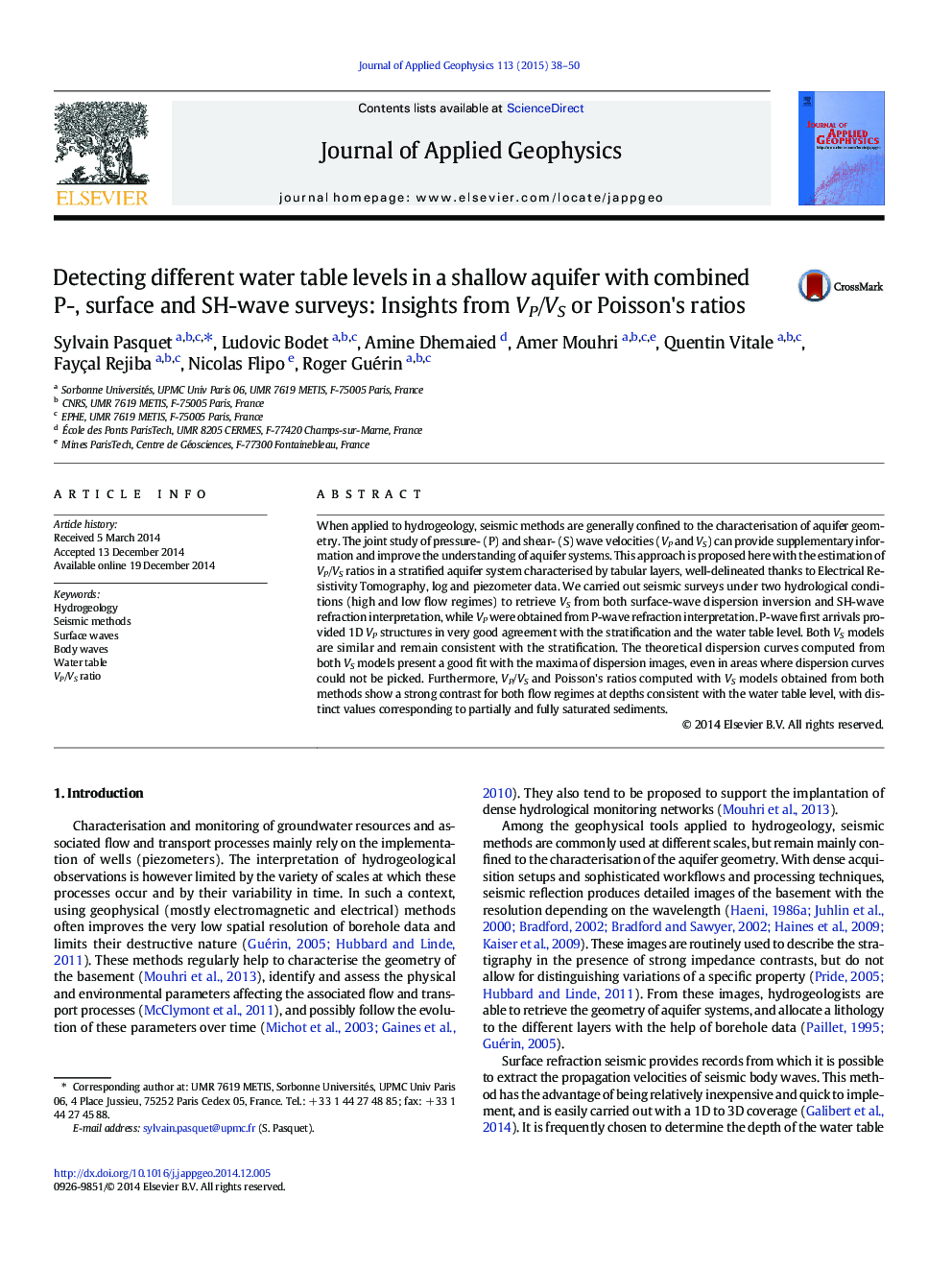| Article ID | Journal | Published Year | Pages | File Type |
|---|---|---|---|---|
| 4739980 | Journal of Applied Geophysics | 2015 | 13 Pages |
•Seismic methods were proposed to assess piezometric level variations.•We worked on a well-constrained experimental site.•A single acquisition setup was used to retrieve VP and VS.•We retrieved VS from surface-wave analysis and VP from P-wave refraction.•VP/VS ratios show strong contrasts at depths consistent with piezometric levels.
When applied to hydrogeology, seismic methods are generally confined to the characterisation of aquifer geometry. The joint study of pressure- (P) and shear- (S) wave velocities (VP and VS) can provide supplementary information and improve the understanding of aquifer systems. This approach is proposed here with the estimation of VP/VS ratios in a stratified aquifer system characterised by tabular layers, well-delineated thanks to Electrical Resistivity Tomography, log and piezometer data. We carried out seismic surveys under two hydrological conditions (high and low flow regimes) to retrieve VS from both surface-wave dispersion inversion and SH-wave refraction interpretation, while VP were obtained from P-wave refraction interpretation. P-wave first arrivals provided 1D VP structures in very good agreement with the stratification and the water table level. Both VS models are similar and remain consistent with the stratification. The theoretical dispersion curves computed from both VS models present a good fit with the maxima of dispersion images, even in areas where dispersion curves could not be picked. Furthermore, VP/VS and Poisson's ratios computed with VS models obtained from both methods show a strong contrast for both flow regimes at depths consistent with the water table level, with distinct values corresponding to partially and fully saturated sediments.
